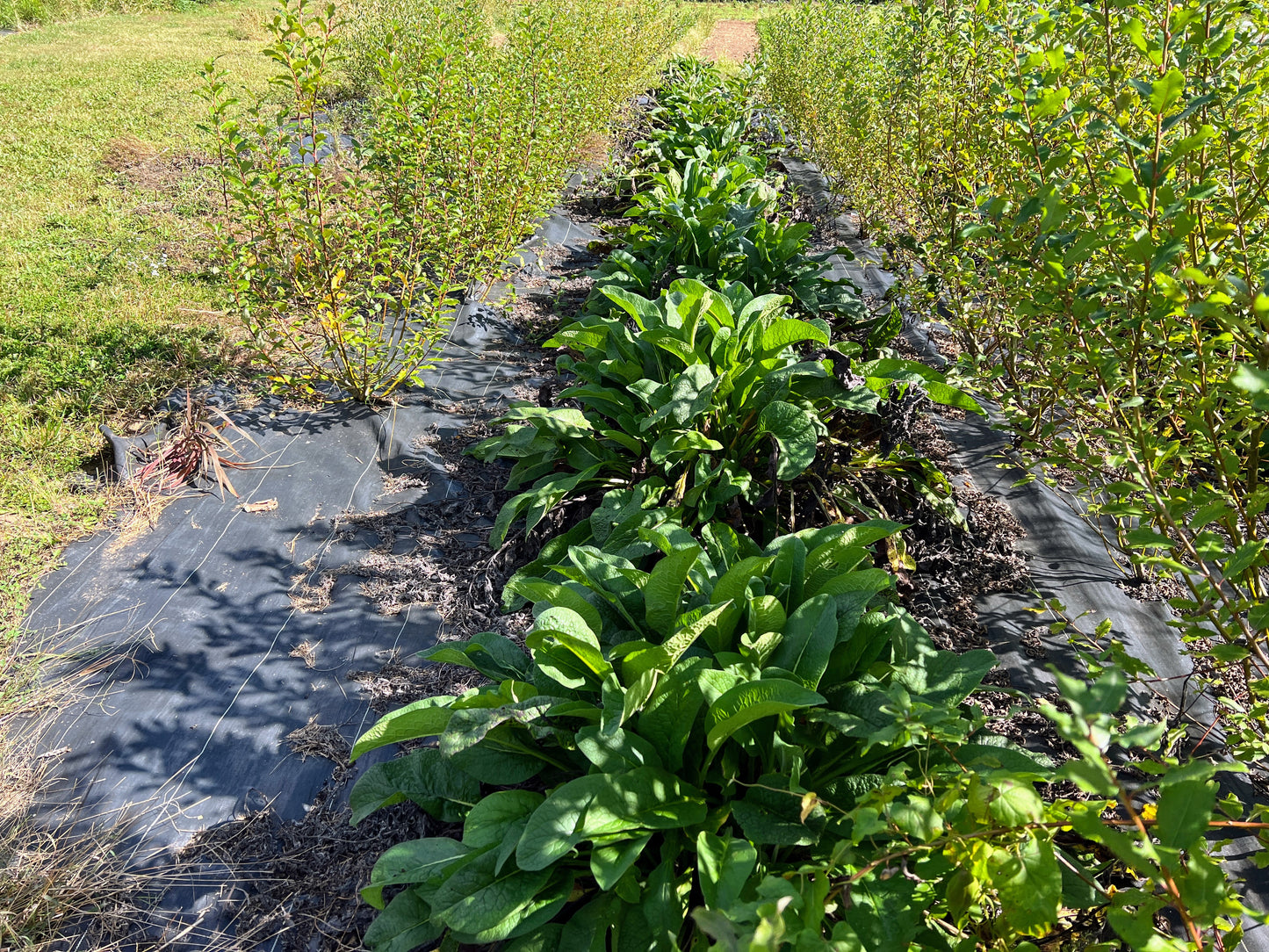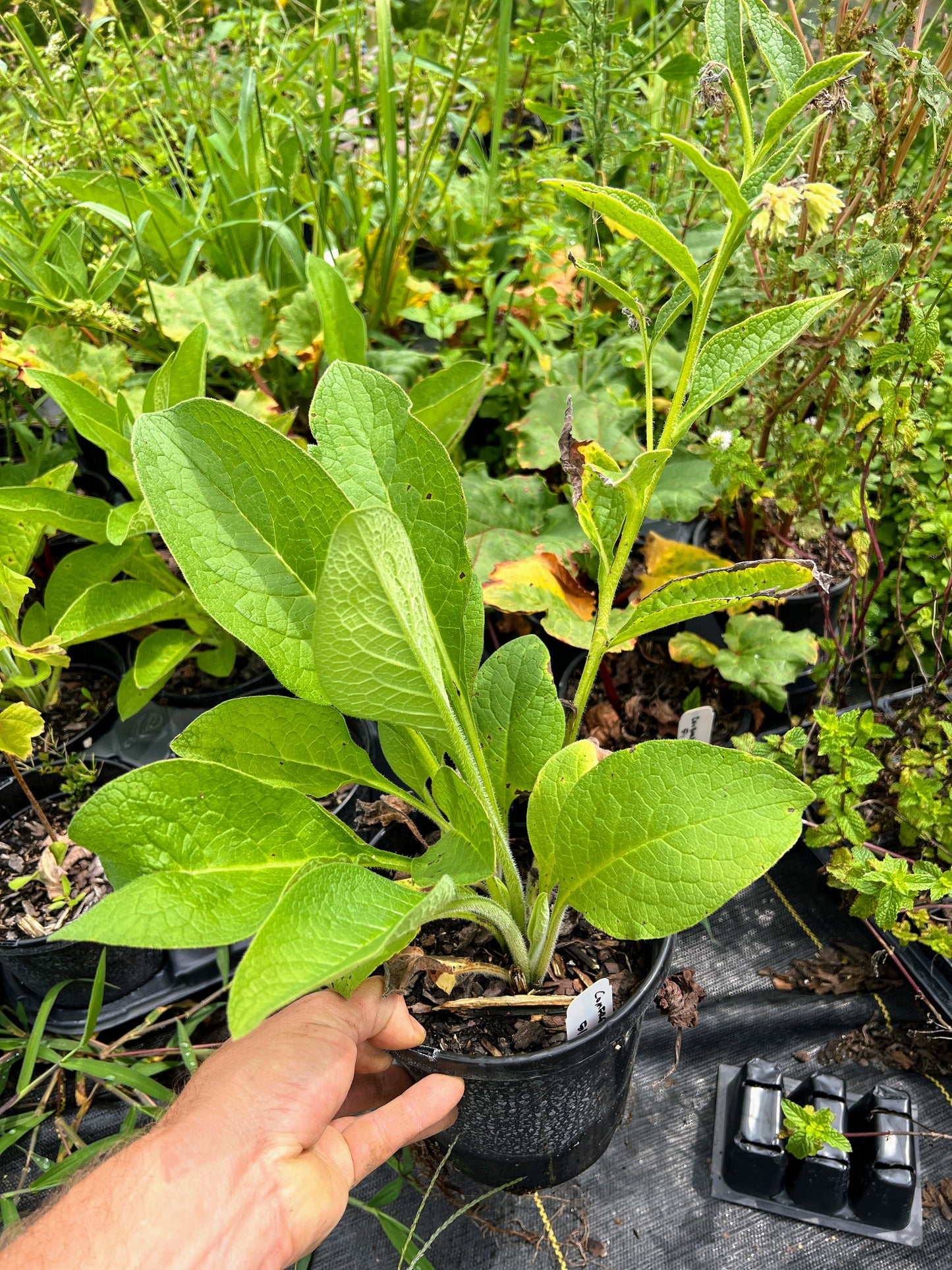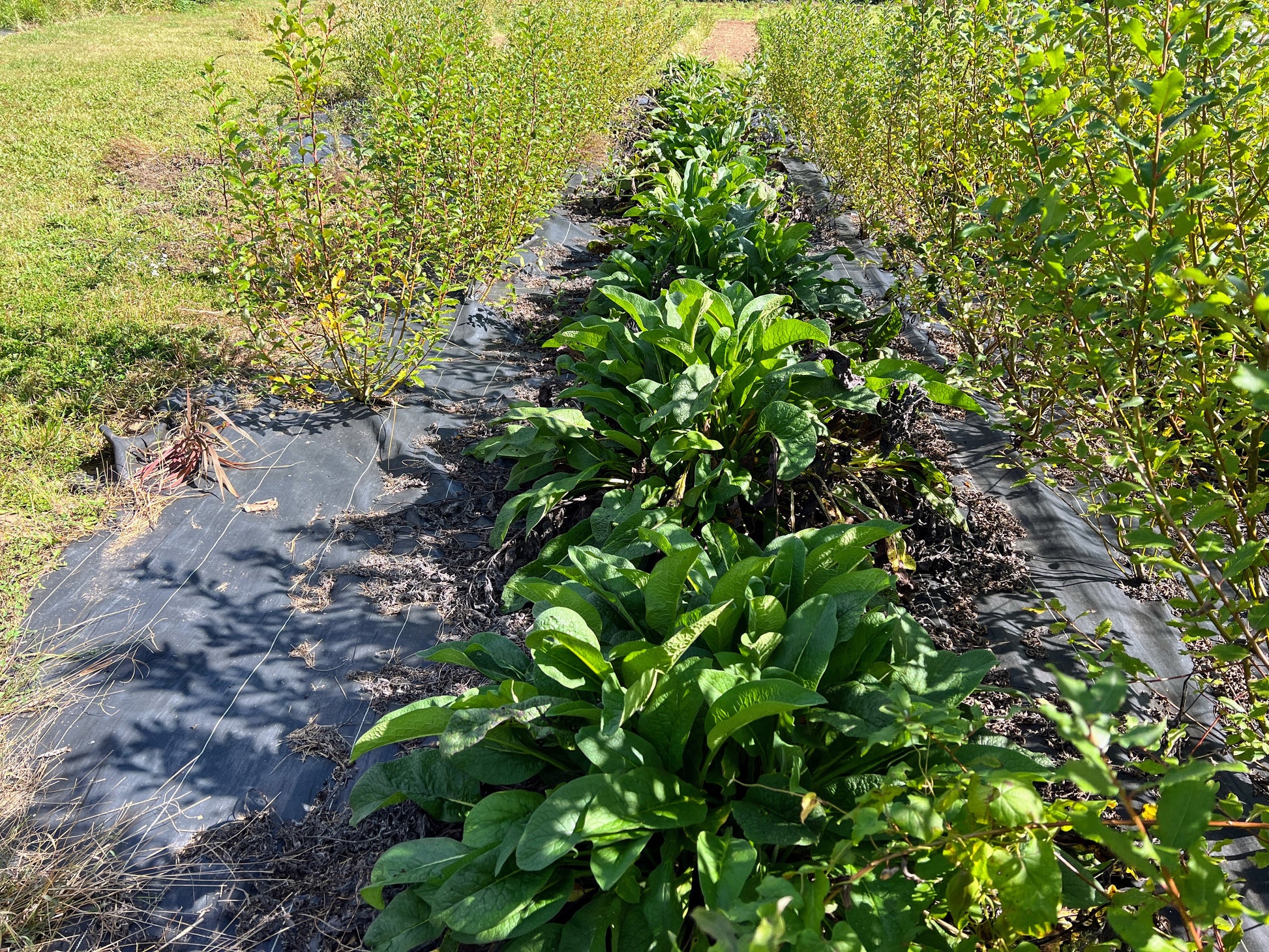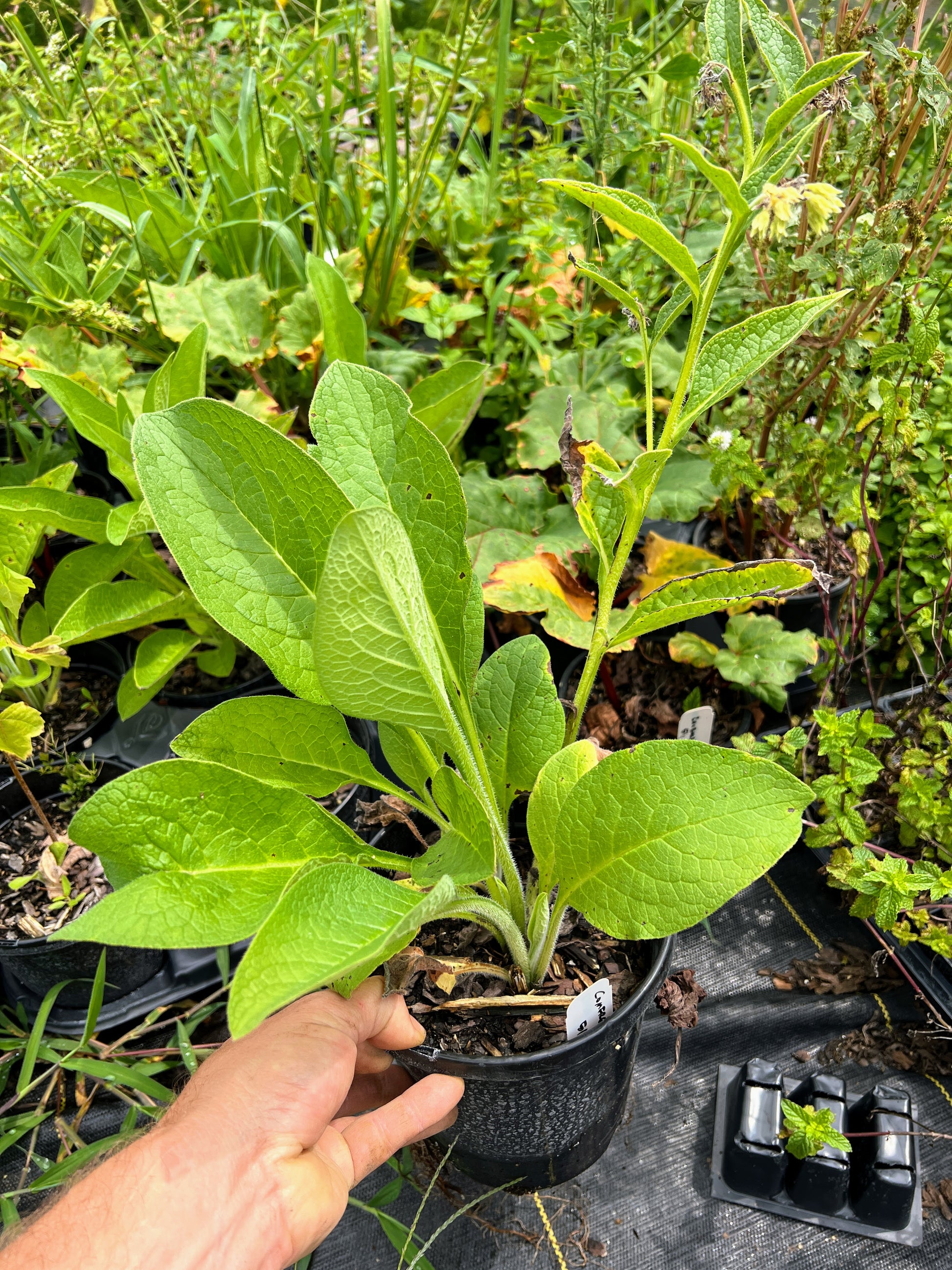Comfrey ~ Russian Bocking 14 (non-invasive)
Comfrey ~ Russian Bocking 14 (non-invasive)
Couldn't load pickup availability
Comfrey: A Must-Have Plant for Every Farm
Preorder: Ships starting in February
Variety: we offer the Blocking 14 type, which is sterile and won't become invasive
Comfrey, belonging to the Borage (Boraginaceae) family, is a remarkable plant that should grace every farm due to its myriad benefits:
-
Soil Enrichment: As dynamic accumulators, comfrey plants are adept at enhancing soil health.
-
Beneficial to Pollinators: Their pink/purple flowers are beloved by pollinators and other helpful insects.
-
Agricultural Uses:
- Companion Planting: It's a champion at drawing nutrients from deep below the ground, making it an excellent companion for fruit trees.
- Biodynamic Tea: Fresh leaves can be transformed into a biodynamic tea, promoting plant vitality and growth.
- Enriched Compost: Incorporating fresh leaves into compost piles results in nitrogen-rich compost.
- Feed: Fresh leaves are also nutritious feed for ruminants, pigs, and chickens.
Strategically, plant comfrey near the kitchen door for easy access and in areas where downspouts saturate the ground. They're also beneficial around animal pens.
Propagation:
We offer various propagation methods: root cuttings, crown divisions, and rooted cuttings in 3" pots. While both types mature to full-size plants within a year, crown divisions have a slight edge in growth speed and survival rate. If you adhere to our instructions, we guarantee a 90% survival rate for root cuttings. Here are some planting tips:
- Space them at least 2 feet apart.
- Optimal conditions include rich, medium-moisture soil with either full sun or partial shade.
- Enhance growth by applying composted manure during planting or around the plant during its growth cycle.
- For root cuttings, prepare a 1-foot square weed-free area, fertilize with compost, bury the cutting in the center, and cover with 1-2 inches of soil. Avoid exposing the cutting; allow it to sprout naturally, usually within two weeks. Alternatively, start in a greenhouse and transplant when rooted.
Care:
Comfrey is resilient and requires minimal care. They flourish in rich, moist soil and benefit from mulching. After flowering, when the plant wilts, trim it. Use the leaves or place them around the plant to serve as mulch. In temperate regions, this cycle might repeat 2-5 times during the summer. To eliminate comfrey, either deprive it of water or submerge it completely. Tilling or digging might cause new growth from root fragments. For orchard owners, comfrey, with its mineral-rich leaves, complements fruit trees and is traditionally planted one per tree. Mowing is also an option since comfrey regenerates quickly. Annually add compost and balanced fertilizer for optimum growth.
For bulk orders, please reach out to us!
Non-GMO Commitment: At Growing Farmers and The Farm on Central, all our plants are guaranteed non-GMO and not genetically modified in any way, upholding natural breeding methods and promoting sustainable gardening and farming practices. In addition, this item has been grown at the Farm on Central where we use organic and regenerative growing practices to produce products that are safe for you and the enviroment.





